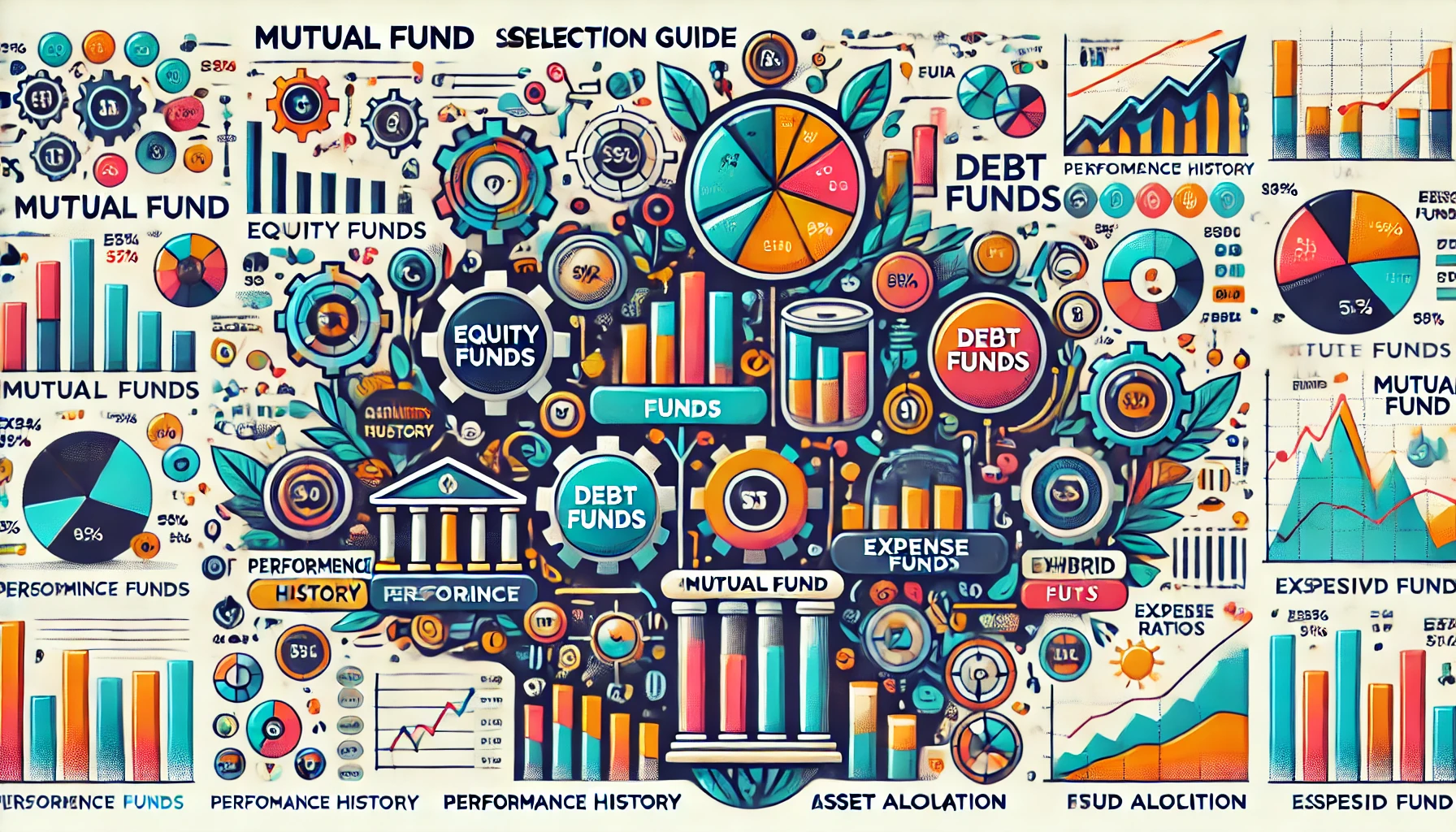How to Choose the Best Mutual Fund: A Comprehensive Guide
Investing in mutual funds has become one of the most popular ways to grow wealth, thanks to their diversification, professional management, and accessibility. However, with thousands of mutual funds available, how do you pick the right one for your financial goals?
Understanding the nuances of mutual fund selection—performance history, expense ratios, asset allocation, fund size, and holdings—is crucial for making informed investment decisions. In this guide, we’ll break down these aspects in detail, offering actionable tips to help you identify the best mutual funds for your portfolio.
What is a Mutual Fund?
A mutual fund pools money from multiple investors to invest in a diversified portfolio of stocks, bonds, or other securities. Managed by professional fund managers, mutual funds aim to achieve specific investment objectives, such as growth, income, or balanced returns.
Why Invest in Mutual Funds?
- Diversification: Reduces risk by spreading investments across various asset classes.
- Professional Management: Experienced fund managers make investment decisions.
- Liquidity: Mutual funds are easy to buy and sell.
- Flexibility: Suitable for different financial goals and risk appetites.
- Affordability: Low minimum investment requirements.
Factors to Consider When Choosing the Best Mutual Fund
1. Performance History
While past performance doesn’t guarantee future results, it provides insights into how the fund has managed market ups and downs. Look for:
- Consistent Returns: Funds that outperform benchmarks over 5 to 10 years.
- Risk-Adjusted Returns: Check metrics like Sharpe Ratio, which measure returns relative to risk taken.
Pro Tip: Compare a fund’s performance to similar funds within the same category to gauge its efficiency.
2. Expense Ratios
The expense ratio reflects the cost of managing the fund, expressed as a percentage of assets under management. Lower expense ratios translate to higher net returns for investors.
- Active Funds: Typically have higher expense ratios (0.5%–2%) due to active management.
- Passive Funds: Index funds and ETFs generally have lower expense ratios (<0.5%).
Pro Tip: Aim for funds with expense ratios lower than the category average to maximize returns.
3. Asset Allocation
Asset allocation defines how a fund distributes its investments across asset classes like equities, bonds, and cash.
- Equity Funds: Best for long-term growth.
- Debt Funds: Suitable for risk-averse investors seeking steady income.
- Balanced Funds: Combine growth and income, ideal for moderate risk-takers.
Pro Tip: Ensure the fund’s asset allocation aligns with your investment goals and risk tolerance.
4. Fund Size and Holdings
- Fund Size: Large-sized funds often have stable returns but may lack agility in volatile markets.
- Top Holdings: Review the fund’s largest investments to understand its sector exposure and risk profile.
Pro Tip: Diversification within the fund’s holdings is essential to minimize concentration risk.
Types of Mutual Funds to Consider
1. Equity Funds
- Invest in stocks for capital appreciation.
- Suitable for long-term investors with a high-risk appetite.
2. Debt Funds
- Focus on fixed-income securities like bonds.
- Offer lower risk and steady returns.
3. Hybrid Funds
- Combine equity and debt for balanced growth and stability.
- Suitable for moderate-risk investors.
4. Index Funds
- Track a specific market index like the Nifty 50 or Sensex.
- Cost-effective and ideal for passive investors.
5. Sectoral Funds
- Focus on specific sectors like IT, healthcare, or energy.
- High-risk, high-reward potential.
How to Evaluate Mutual Funds: A Step-by-Step Process
Step 1: Define Your Investment Goals
- Are you saving for retirement, a home, or your child’s education?
- Determine your investment horizon and risk tolerance.
Step 2: Shortlist Funds Based on Category
- Match fund categories (equity, debt, hybrid) to your goals.
Step 3: Analyze Key Metrics
- Expense Ratio: Choose funds with lower fees.
- Performance Metrics: Compare CAGR (Compound Annual Growth Rate) across periods.
- Risk Measures: Evaluate beta, standard deviation, and alpha.
Step 4: Review Fund Manager’s Track Record
The fund manager’s expertise and experience significantly impact performance.
Step 5: Check Tax Implications
Understand the tax treatment of your chosen fund category:
- Equity Funds: Long-term gains taxed at 10% above ₹1 lakh.
- Debt Funds: Taxed based on holding period.
Common Mistakes to Avoid When Choosing Mutual Funds
- Chasing High Returns: Focus on consistent performance, not just recent gains.
- Ignoring Expense Ratios: High costs erode returns over time.
- Skipping Risk Assessment: Ensure the fund matches your risk profile.
- Neglecting Diversification: Avoid overconcentration in one sector or asset class.
- Overlooking Investment Horizon: Align your fund choice with your time frame.
Top Tools to Compare and Analyze Mutual Funds
- Morningstar: Detailed fund analysis and ratings.
- Value Research: Performance data and risk analysis.
- Moneycontrol: Real-time updates and fund insights.
- Fund Fact Sheets: Provided by fund houses for detailed breakdowns.
Why Choosing the Right Mutual Fund Matters
Selecting the best mutual fund can significantly impact your financial journey. A well-chosen fund:
- Aligns with your long-term goals.
- Reduces unnecessary risks.
- Maximizes returns through efficient cost management and diversification.
Conclusion: Your Path to Smarter Mutual Fund Investments
Choosing the best mutual fund requires a blend of strategy, research, and clarity about your financial goals. By focusing on performance history, expense ratios, asset allocation, and fund size, you can build a robust portfolio tailored to your needs. Remember, mutual funds are not one-size-fits-all—customize your investments to match your aspirations and risk tolerance.
With the right knowledge and tools, you can navigate the world of mutual funds confidently, securing a brighter financial future.

